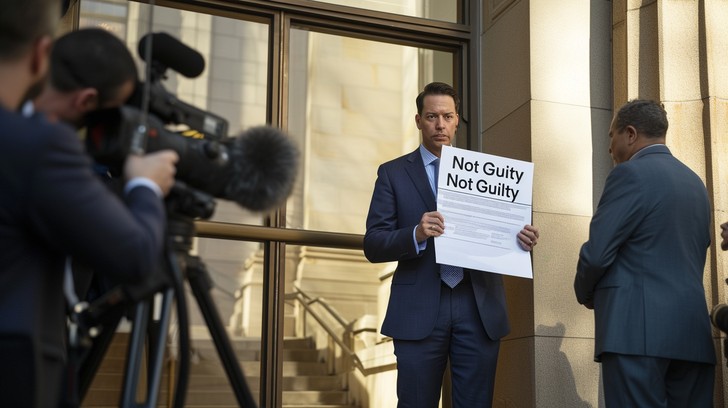Now Reading: Implications of Intellectual Property in the Metaverse
-
01
Implications of Intellectual Property in the Metaverse

Implications of Intellectual Property in the Metaverse
Introduction
The Metaverse envisions a future in which people can use virtual reality (VR) headsets, glasses, and wristbands and do a variety of things, including socialise, collaborate, adopt avatars, play games, explore virtual zoos and jungles, meet at virtual coffee shops, hold meetings in virtual boardrooms, dance in virtual nightclubs, and attend virtual concerts with friends[1]. Virtual Reality, Augmented Reality and Blockchain have a major contribution towards the advancement of Metaverse. The Metaverse has emerged as one of the top five emerging trends and technologies for 2022 and is likely to be worth $800 billion by 2024[2]. The concept of Metaverse is gradually unfolding and has already gained a foothold in a number of sectors, like healthcare, law, business and sports. It has also opened endless opportunities for fashion designers, fashion and retail brands and “trendsetters”. Digital clothing has emerged as the latest fashion which is not only exclusive but also affordable. The immersive digital environment of the metaverse creates a number of issues, including the ownership of intellectual property (IP) on virtual goods and material, including avatars, produced by companies and users, as well as the enforcement of IP rights in the event of infringement[3].
This paper gives a comprehensive understanding of the evolution of fashion industry in the Metaverse through Non-Fungible Tokens (NFTs) and technologies like Augmented reality and virtual reality. The author speaks about the advantages of digital fashion economically, socially and environmentally. This paper analyses the various concerns that arise with the expansion of fashion and retail brands over the digital space. It elaborates on the issue of Copyright ownership on the Metaverse and trademark infringement.
An Introduction to Digital Fashion
The culture around the creation, collecting and wearing of clothing in the digital sphere is known as “digital fashion.” The massive potential of digital fashion is being welcomed by independent creators and prominent brands alike as a response to technology advancement. Digital clothing is dependent on pixels and not on textiles[4].
The idea of digital fashion comes from video games, however, technologies such as Metaverse have elevated digital clothing from merely functional to fashion. It was observed that gamers without hesitating bought clothes, accessories and skins for their characters although it did not affect their game in anyway, therefore making it clear that individuals would passionately invest in digital clothing[5]. The beginning of Social Digital Fashion can be traced back to stimulators such as The Sims (2000) and interactive social network called the Second Life[6].
The creation of the NFT, which enables designers to register digital fashion in a unique format, i.e., blockchain. This marked the first step toward the creation of a real metaverse for the fashion industry[7].
Image Courtesy: https://medium.com/@eliesczhae/digital-fashion-the-next-frontier-of-nfts-360f19dc17d7
Benefits of Digital Fashion
- Digital Fashion is environment friendly
Did you know? The Fashion industry contributes to around 10% of the total emission of the greenhouse gases. Approximately ,700 gallons are needed to manufacture one cotton shirt and 2000 gallons to produce a pair of jeans, with this, the fashion industry becomes the second-largest consumer and polluter of water[8]. Well, the good news is, with the digital fashion surfacing the fashion world, the amount of air pollution and water wastage can be reduced significantly as the carbon footprint of producing a digital cloth is around 95% lesser than that of a physical garment[9]. Moreover, it is also a sustainable option as there is no wastage of textiles or other raw materials involved in manufacturing a physical garment.
- Manufacturing cost and time can be reduced
Fashion and retail brands can reduce their expenses if they choose to expand their business to the digital space as it does not involve any manufacturing costs, logistics costs or storage costs.
Also, digital innovation process consumes lesser time than the physical process of designing and manufacturing. For instances, PUMA cut their water wastage by 17% and expenses by 30% by entering into the arena of digital fashion.
- Digital Fashion can be truly universal
Digital Fashion advances the idea that anyone irrespective of their size, body type or gender can wear anything that they wish for. Physical garments can sometimes create a gap between people of different sizes and genders. However, digital clothing helps in doing away with this problem. Moreover, it is relatively easier for fashion brands to create clothing that is suitable for everyone alike.
Intellectual Property on Metaverse
Many fashion companies are entering the realm of NFTs and Metaverse. In certain circumstances, the NFTs are auctioned alongside some real couture items for prices significantly greater than those typically paid for the original pieces. NFTs assist the brand owners in reducing anti-counterfeiting. NFTs fight against the counterfeits by extending the possibility to embed an NFT in physical products which can then be scanned in order to confirm whether they are authentic or not[10]. However, NFTs cannot guarantee authenticity fully because if the information entered at the outset is false, then the NFTs will affirm and uphold that untruth in all of its subsequent sales.
- Copyright Ownership on Metaverse
The legal definition of copyright for digital assets such as NFTs has not been regulated and recognised. This opens a door for a vicious loop of ambiguities and disputes between creators and brands. Another problem is that, on a digital space like Metaverse, individuals cannot get their money back through blockchain when they have been cheated on by sale of fake creations, besides, they can also not file a complaint against the same because the transactions are one-way[11].
“Ownership” in the metaverse is nothing more than a form of licensing, or provision of services. The concept of Ownership is quite complex in the metaverse. Last year, Nike registered seven trademark applications in advance of its entry into the Metaverse. The trademark application covered virtual items that could be downloaded, virtual goods that could be purchased in stores, and virtual clothes and footwear that could be worn in virtual worlds. The ownership of a piece of property can be traced back to it in the physical world. While one individual may own the comparable physical property in the Metaverse, other people may hold ownership of the corresponding digital things and properties[12].
- Trademarks on Metaverse
Trademark is a type of Intellectual Property which helps in distinguishing the goods and services of one enterprise from those of the other enterprises. A trademark helps in establishing goodwill for the brand and ensures that the source of goods is engraved in the minds of its consumers. When a brand acquires trademark protection, it prevents others from using the same or similar mark which would cause confusion and deception in the minds of the people regarding the credibility and authenticity of the goods or services.
Well-known companies like Burberry, Nike, Gucci, Givenchy, and Skechers, as well as unidentified and independent applicants, have been rushing to register trademarks for their Metaverse products. Some of these companies have also looked into using non-fungible tokens, (NFTs), to protect their intellectual property rights[13].
A lawsuit for trademark infringement and dilution was recently filed by Hermès which one of the most exclusive luxury brands, against artist Mason Rothschild for creating and marketing “MetaBirkins,” a collection of 100 NFTs featuring furry Birkin bags, and for extensively using the BIRKIN trademark in connection with the NFTs. Hermès claims that the line violates the well-known BIRKIN trademark and trade dress that they have. In reply to the same, Mr. Rothschild refers to himself as an artist and claims that fair use absolves his liability[14]. Hermès made assertions about how, in addition to raising the possibility of customer confusion, this unlawful use by third parties may also damage the companies’ virtual goods markets.
Image Courtesy: https://www.gamingtechlaw.com/2022/02/intellectual-property-metaverse-nft-fashion.html
Legal Challenges on Metaverse
Identification of the owners of IP protected content created in the metaverse will be a major challenge. This will require taking into consideration the varied specifications from jurisdictions around the world. Assignment and licensing agreements will play a vital role in regulating Metaverse. Determining the users rights will be necessary because the right to exploit a work in the metaverse does not entirely fall within the ambit of the digital uses typically covered by agreements. It is crucial that fashion brands and fashion designers are aware of the terms and conditions in particular, IP ownership and control provisions of the Metaverse before they expand their business.
While the Metaverse is providing fashion designers, fashion brands and independent artists, with new and exciting opportunities, the issue of how to safeguard intangible property on the Metaverse still looms. The Metaverse is built on the concept of decentralisation, however, the existing Intellectual Property Protection mechanism relies on centralised methods such as courts and tribunals. Therefore, it is important that this aspect should also be taken into consideration and the existing legislations should be relooked upon accordingly.
References:
[1] Badri Narayana, Hemant Krishna, Protecting Intellectual Property in Metaverse, The Hindu, https://www.thehindubusinessline.com/opinion/protecting-intellectual-property-in-metaverse/article65408301.ece ( Last Visited on 19th June, 2022)
[2] Geri Mileva, 50+ Metaverse Statistics | Market Size & Growth (2022), https://influencermarketinghub.com/metaverse-stats/ (Last Visited on 19th June, 2022)
[3] Alix Taverne, IP and the metaverse: ownership and infringement of rights, Osborne Clarke, https://www.osborneclarke.com/insights/ip-and-metaverse-ownership-and-infringement-rights (Last Visited on 19th June, 2022)
[4] Digital Clothing: All You Need to Know About the Future of Fashion Brands, Loomy Blog, https://blog.loomly.com/digital-clothing/, (Last visited on 20th June, 2022)
[5] The History of Digital Fashion, NFTArty, https://nft-arty.com/the-history-of-digital-fashion/, (Last Visited on 19th June, 2022)
[6] Digital Fashion in the Metaverse, Dissrup, https://dissrup.com/editorial/digital-fashion-in-the-metaverse, (Last Visited on 19th June, 2022)
[7] Digital Fashion in the Metaverse, Dissrup, https://dissrup.com/editorial/digital-fashion-in-the-metaverse, (Last Visited on 21st June, 2022)
[8] Rashmila Maiti, Fast Fashion and Its Environmental Impact, https://earth.org/fast-fashions-detrimental-effect-on-the-environment/, (Last visited on 19th June, 2022)
[9] Digital Clothing: All You Need to Know About the Future of Fashion Brands, Loomy Blog, https://blog.loomly.com/digital-clothing/, (Last visited on 21st June, 2022)
[10] Valentina Mazza, Intellectual Property Rights in the Metaverse: NFTs and Fashion, Dlapiper, https://blogs.dlapiper.com/iptitaly/2022/02/intellectual-property-rights-in-the-metaverse-nfts-and-fashion/#page=1, (Last visited on June 22nd, 2022)
[11] Lorenzo Salamone, Renato Balestra’s new logo is strangely familiar, https://www.nssmag.com/en/fashion/28889/renato-balestra-logo-balenciaga, (Last Visited on June 22nd, 2022)
[12] James Lyons, Legal Issues Facing the Metaverse, Lawrence Stephans, https://www.lawrencestephens.com/legal-issues-facing-the-metaverse/, (Last Visited on 23rd June, 2022)
[13] Badri Narayana, Hemant Krishna, Protecting Intellectual Property in Metaverse, The Hindu, https://www.thehindubusinessline.com/opinion/protecting-intellectual-property-in-metaverse/article65408301.ece ( Last Visited on 23rd June, 2022)
[14] Ana Leticia Allevato, Metaverse: Fashion Trademark Battles to Watch, https://blog.jipel.law.nyu.edu/2022/03/metaverse-fashion-trademark-battles-to-watch/, (Last Visited on 25th June, 2022)
Author:

Aanchal K Golecha, a third-year law student at School of Law, Christ University, Bangalore has a deep-rooted passion for Fashion Laws, Intellectual Property Rights, and Feminist Jurisprudence. Besides, she also enjoys blogging, cooking, and digital arts. She is committed to learning continuously and nurturing the values of excellence and integrity. “Do what is right and not what is easy” is something she believes in.












